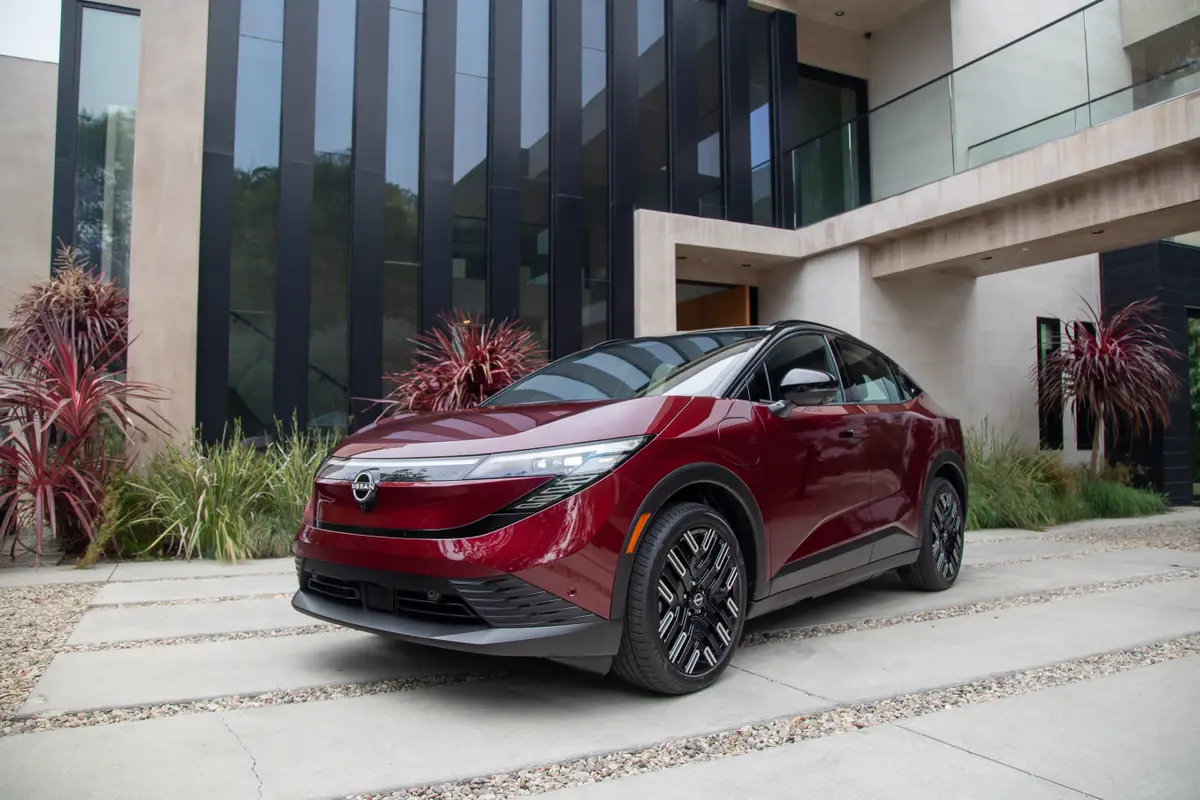Three Plug-Ins: The Cost to Drive

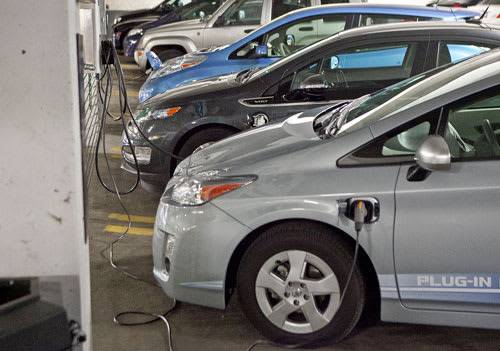
In a previous post, we compared the driving experience of three plug-in cars: the Nissan Leaf, the Chevrolet Volt and a Prius Plug-In demonstration car that is still a work in progress ahead of a 2012 retail product launch. Here, we present the results in both energy expended and cost.
Our “commute” departed from and ended at Cars.com’s Chicago headquarters and covered 47.1 miles round-trip. Each of the three cars had fully charged battery packs and was preheated on grid power to maximize range. (The Leaf and Volt accomplished this via their websites or iPhone apps and the Prius PHV via its remote).
We split the drive into three legs, encountering sustained highway speeds near 70 mph for a while and roughly 50 mph for a spell, as well as stop-and-go city and side-street driving. Each of our three drivers took a turn behind the wheel of each car, which should normalize senior editor Dave Thomas’ leadfoot (if that’s even possible). Outside temperatures ranged between 36 and 40 degrees, but our convoy experienced all the same temps, speeds and wind patterns as a group. Though it was only one trip, we kept variables as constant as possible.
Once we returned, we tallied up the electricity and gasoline used and came up with the following results. Note that the costs are based on real-world prices where we live, not national averages. Charging at home costs 11 cents per kilowatt-hour. Regular gas two blocks from our office cost $3.99 per gallon of regular for the Prius and an indigestible $4.16 per gallon of premium for the Volt. (Yes, the Volt uses premium.)
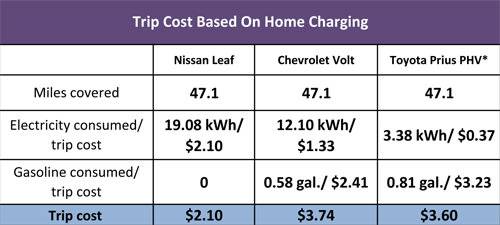
*2011 demonstration vehicle; 2012 product will differ
**Based on local rates of $0.11 per kilowatt-hour, $3.99 per gallon of regular and $4.16 per gallon of premium.
Fueling Cost
The low price of electricity gives the Leaf an advantage in a commute for which it has enough range. Frankly, we expected the Volt to come in cheaper than the Prius Plug-In because the Chevy’s electric-only range is roughly twice as great on the low end, predicted broadly as between 25 and 50 miles. In actuality, it went 25.6 miles and then switched over to gas power, where the price of premium gas added insult to injury. (We’ll report on the Volt’s and Leaf’s winter ranges in greater depth in the future.) For a shorter trip, or if higher temperatures delivered longer EV-only range, the Volt might have cost less than the Prius.
Unfortunately, for this trip it’s impossible to report the EV-only range for the Prius (a predicted maximum of 13 miles) because its gas engine can — and did — turn on relatively early in the drive, piloted by and/or attempting to keep up with Dave. Even with its shorter EV range and more gas used, the Prius PHV was less expensive to power. It bears noting that the Volt’s $3.74 trip cost would have been about 10 cents cheaper if it could run on regular rather than premium gas, but that would still be 4 cents more than the Prius PHV.
How About Longer Drives?
The idea of buying a car just for commuting is a nice one, but it’s not realistic for many Americans. The farther a motorist drives, the greater the difference among these three cars. In the table above, the Leaf is the cheapest to power, but it gets disqualified outright for long drives. Its range is 60 to 100 miles, and it depends on weather, driving style and other conditions — as with the other two.
Once the battery is depleted, the Volt defaults to a combined city/highway mileage rating of around 37 mpg. Though the Prius PHV is a few hundred pounds heavier than the regular Prius, Toyota reports that the demonstration vehicles consistently revert to the same combined mileage, 50 mpg, from the time the battery charge is depleted. As a result, as a trip gets longer, the Prius PHV’s overall efficiency advantage over the Volt increases and then levels off at a theoretical 13 mpg gap.
Total Cost Fuel isn’t the only cost involved. Unfortunately, we can’t gauge total cost because the Prius Plug-In hasn’t been priced yet. The Leaf starts at $32,780, the Volt at $40,280 before a $7,500 tax credit for eligible filers.
Because its battery capacity is well below 16 kWh (at 5.2 kWh), the Prius PHV won’t be eligible for the same tax credit, so it will have to be competitively priced with minimal or no subsidy. We can also only speculate about maintenance costs. In theory, the Leaf’s maintenance and repair will be the cheapest, as its drivetrain is simple and requires no oil changes or the like. The Volt does require oil changes, but the frequency will depend on how often the gas engine is used. Neither car has a reliability history yet. The regular Prius does, and it’s been exceptional.
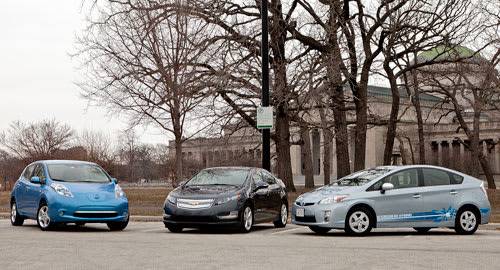
Hidden Benefits
Then there are the perks of plug-in cars. How do you value access to carpool lanes, preferential parking or free charging? Many bonuses remain unknown and unpredictable. For example, the state of California denied the Volt a classification that would allow it to access HOV lanes. How about your state or municipality? Right now, most public charging is free as an incentive to build EV demand and infrastructure, and to attract customers at retail establishments. Will this last? To illustrate the potential difference, below are the costs for our plug-in drive based on free charging (which we enjoy, though the parking isn’t exactly cheap) and an arbitrary cost of $1 per hour multiplied by the charging period (rounded up to the full hour for each car).

Free public charging makes the fueling cost track with the EV-only range of our three test cars. Scandalously, the Leaf is free. However, based on a reasonable-sounding $1 per hour for 240-volt charging, EV driving seems decidedly unattractive. The Volt gets the worst of it with the one-two punch of overpriced electricity and premium gas. Frankly, we wonder if there’s a business model for 240-volt charging at all.
Prospects for the Future
Initial affordability depends in part on automakers’ ability to make a little profit, or at least not lose their shirts on every car sold. These three cars seem to strike a balance. The Leaf has the largest and likely most expensive battery pack, but the rest of the car’s simple design makes it theoretically cheaper to build than a conventional gas-powered car. If battery prices fall and volume increases, the Leaf has promise.
The Volt is far more complex. Its battery is smaller than the Leaf’s, but I speculate that its price will remain relatively high. Though many experts believe the inclusion of electric and internal-combustion components in the same car will never be the key to significant per-unit profits, Toyota doesn’t seem to agree, having doubled-down and promised regular hybrid versions of all its models within a few years. The Prius Plug-In’s relatively small battery pack and parts sharing with the regular Prius give it a substantial advantage, though its current ineligibility for a $7,500 tax incentive is no small matter.
Which Is Best?
Each of these cars serves a different type of driver. For us to pick a favorite would be to ignore the different goals. However, if you are just buying one as a green commuter car, the Leaf clearly comes out ahead in this match-up, where the parameters included a specific trip length, high gas prices and cheap electricity.
Today, saving money in the long run is far from assured with plug-in cars, depending in part on the vehicles against which you compare them. They’re definitely a means to burn less gasoline, for whatever reason you might choose.
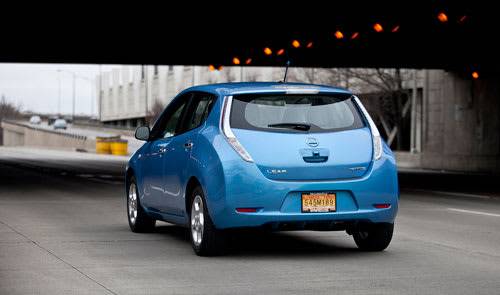

Former Executive Editor Joe Wiesenfelder, a Cars.com launch veteran, led the car evaluation effort. He owns a 1984 Mercedes 300D and a 2002 Mazda Miata SE.
Featured stories



